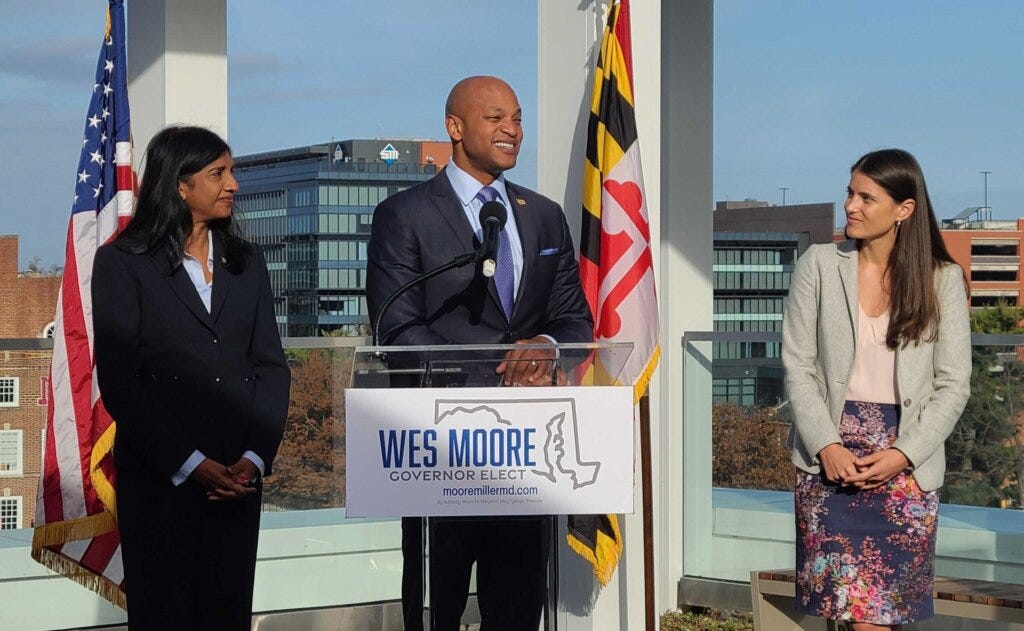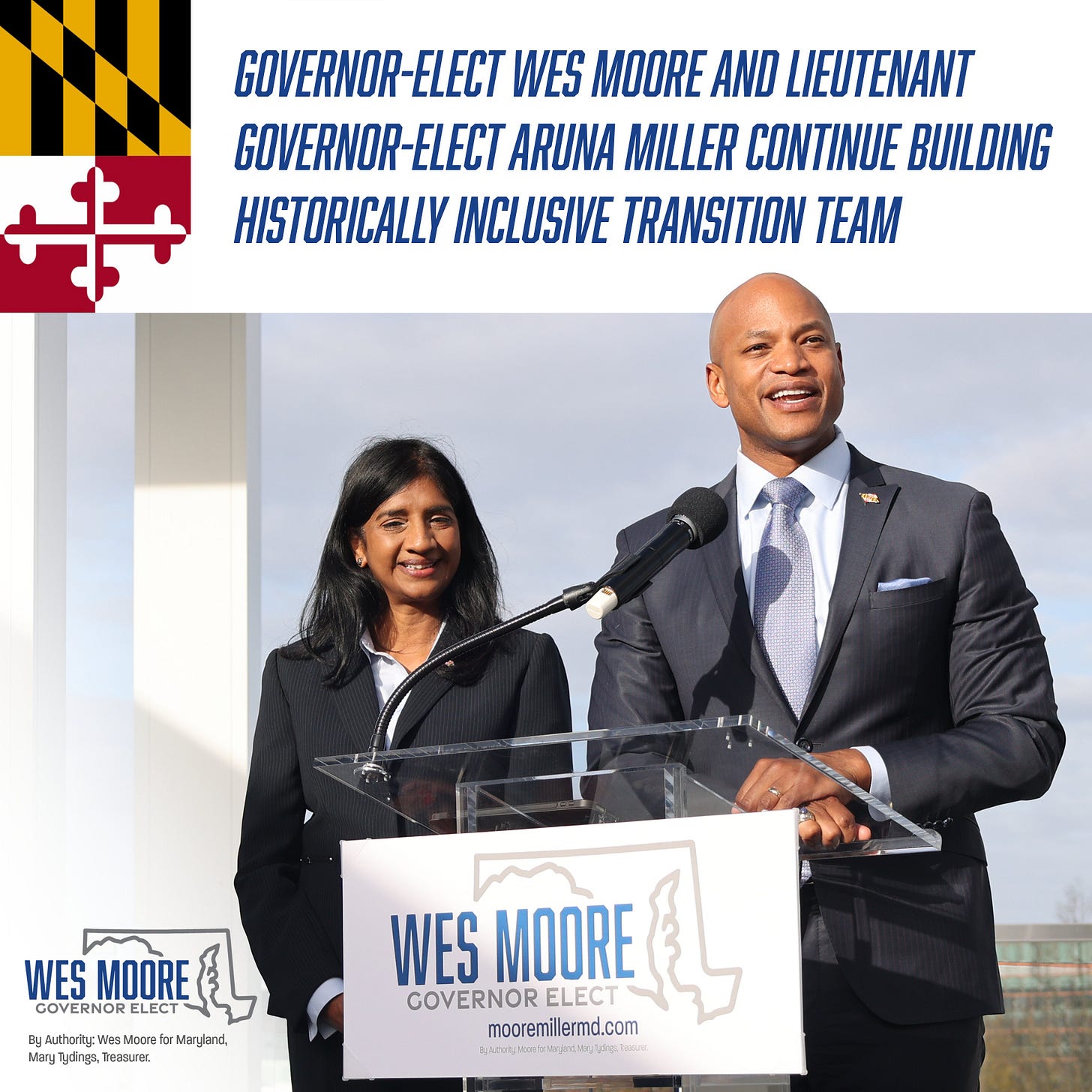Building tools to support effective government transitions
Government transitions are critical moments for our democracy. Our new Civic Transition toolkit gives newly elected officials a roadmap to follow to run inclusive and effective transitions.
Government transitions can be inclusive
Government transitions have a well-earned reputation for being “invitation only” affairs. Usually newly elected officials hire for key roles and decide their policy priorities for the beginning of their administration with limited input from the public. Through CDCE’s Effective Government Transitions Project, CDCE Senior Fellows Cleo Hirsch and Isaac Frumkin drew on their experience as the Transition Director and Transition Data Analyst, respectively, to develop a Civic Transitions Toolkit which establishes a new standard for how to run an inclusive and effective government transition.
At CDCE, Hirsch and Frumkin led an effort to create toolkits that allow future transition leaders to operationalize a commitment to inclusion during the transition by clearly communicating with the public about opportunities to participate. These opportunities include the chance to apply for roles in state government, join transition policy committees as “at-large members,” submit policy ideas, and invite the newly elected official to community events. The evidence shows that these efforts can inspire significant amounts of civic engagement and constructive dialogue - more than 5,000 Marylanders participated in the Moore-Miller Transition in just 70 days.
Building tools to support newly elected officials

Newly elected officials often don’t engage the public because their transition staff lack the support and templates they need to engage the public effectively. It is difficult for them to immediately begin the public facing elements of the transition in the hectic moments following Election Day when public interest is at its height. Most states provide little or no financial support for the transition even though there is extremely important work that needs to be done during this time. In order to support newly elected officials who seek to use their transitions to inspire positive civic engagement, CDCE has developed two new free toolkits that we are making available to newly elected officials across the state and nation.
The Civic Transition Toolkit: CivicTransitions.org
The Civic Transition Toolkit provides newly elected officials with a step-by-step guide for leading a successful and inclusive transition. It walks newly elected officials through the process of forming and staffing transition policy committees, establishing a fair and effective hiring process to build a strong administration, engaging the public through clear communications and deliberative meetings, and producing a final transition report. At every step, the toolkit provides templates and guidance that newly elected officials can use to make the choice to include more voices in the transition. This toolkit covering the public engagement elements of a successful government transition can be a useful supplement to resources from the National Governors’ Association and others that cover other components of government transitions.
A Sample Transition Website: SampleTransitionWebsite.org

As our team reflected on their experience in the Moore-Miller Transition, it was clear that they benefitted from getting a simple transition website up immediately after Election Day.
Maryland Secretary of Appointments Tisha Edwards, former chief of staff to the Moore-Miller campaign, said they both wanted a transition process that was diverse and inclusive, which required statewide representation.
“The transition team took that mandate seriously by launching an interactive website, executing many forums for community feedback and providing templates to assist with policy proposals” she said.
This enabled them to effectively capture the wave of interest in service and civic engagement that came their way. Our team also described having limited templates and resources to use as they built the site because most transitions take their resources offline after the transition is over. In many cases, even the final transition report is not left online (we were only able to locate 7 reports from Governors around the country to post as examples in our toolkit).
With our “sample transition website,” we hope that newly elected officials will have a starting point for public engagement at the beginning of their transition journeys.
Next Steps
We were excited to take on this project at CDCE because government transitions are an overlooked area in political science. But the period right after elections is just as important as the much remarked upon period before elections. Executive transitions between two Presidents or Governors or Mayors or County Executives are critical moments for our democracy. These are moments when faith in the peaceful transition of power and trust in election results can be strengthened or weakened. Government transitions are key moments for resilience where governments have the opportunity to adapt to changing circumstances and challenges.
Transitions don’t only matter for newly elected officials. They also matter for the public. Right before an election, the public is induced to think about public issues through the lens of the pre-ordained mutually exclusive choices on their ballots. During transitions, however, newly elected officials are able to engage the public in a more open-ended way to explore different pathways and partnerships to achieve shared priorities. Government transitions are significant moments when the public can be mobilized to serve in government and engage in community problem solving. There is huge potential to use government transitions to cultivate a broader “democratic imagination” in our society.
We hope you will forward this email and share our Civic Transition Toolkit with people who might be able to use it. We would love to get connected to other newly elected officials (or aspiring newly elected officials!) who are interested in using our toolkit to run a more inclusive and effective transition. We’d also love to connect with scholars across disciplines who have insights to share about how we might best use the unique opportunities presented during government transitions to strengthen democracy. Together there is so much more we can do to advance this mission.
Mike Hanmer is Director of UMD’s Center for Democracy and Civic Engagement. Sam Novey is Chief Strategist at the Center for Democracy and Civic Engagement.




